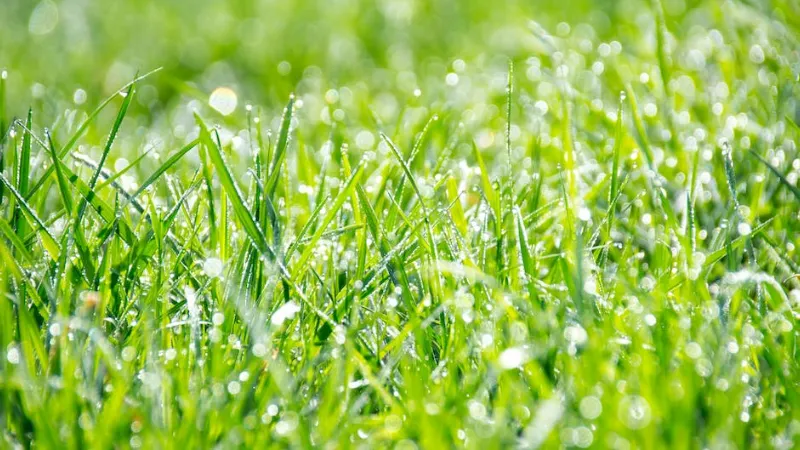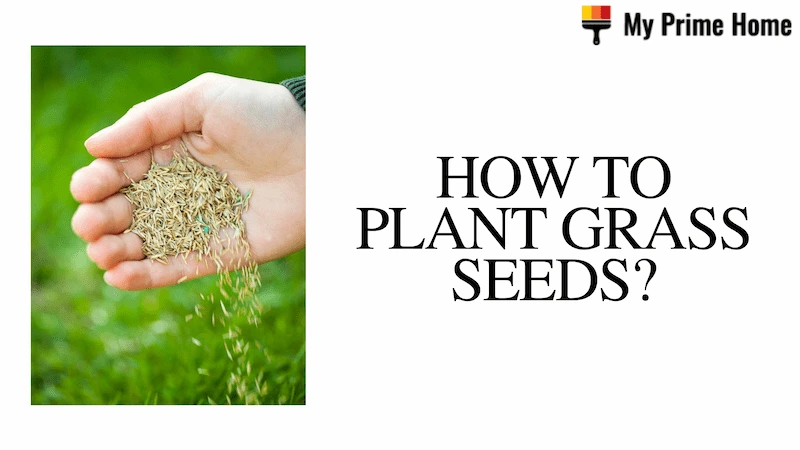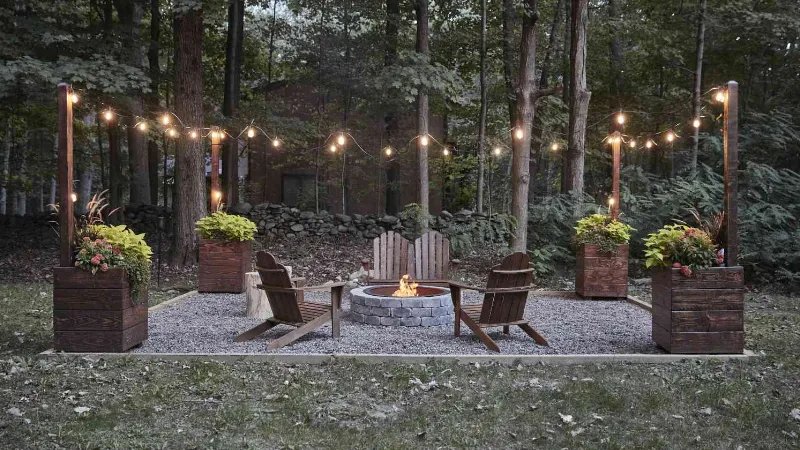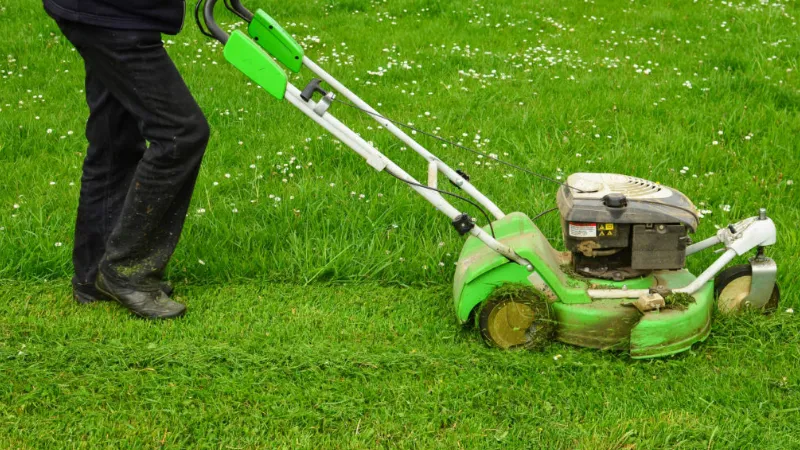Want to establish a lawn without needing to wait an eternity for it to fully develop? If you want to grow grass fast, stick with us, and don’t be intimidated or perplexed—we’re here to help! Even though you might not think you can use grass seed to grow grass fast, you can if you have the right knowledge and tools.
How to grow grass fast? You need to determine your grass type, choose the right seed for your climate, plant at the correct time of year, prep the soil, seed and feed, water and protect the grass.
You can quickly achieve a beautiful lawn if you simply follow these simple instructions. Please continue reading for more information.
How to Grow Grass Fast?
Here is the step-by-step guide on how to grow grass fast:
Determining Your Grass Type
One of the most important and fundamental steps in the growing of grass is determining your grass type. Choose the best grass for your local climate, whether it’s a cool-season grass, warm-season grass, or a transitional grass type, to get the best, quickest grass growth. Making the right decision is crucial; otherwise, your grass might grow quickly, falter, and then fail.

Warm-Season Grass
Warm-season grasses thrive in areas with hot summers and mild winters, such as the Deep South and Southeast. Warm-season grasses typically grow rapidly from mid- to late spring through early fall and hibernate in the winter. Approximately 80 and 95 degrees Fahrenheit are the range in which they grow best. Late spring to summer is the ideal time to plant warm-season grasses.
The fastest-growing warm season grasses include:
- Bermuda grass: This particular grass variety can germinate in as little as seven to ten days.
- Buffalo grass: Two weeks to thirty days are needed for this variety to germinate.
- Centipede grass: In 14 to 21 days, this kind of grass will begin to sprout.
Cool-Season Grass
The active growth times for cool-season grasses are early spring and early fall. They thrive in regions like the Northeast, Pacific Northwest, and Upper Midwest. In the winter, these grasses are typically green, and in the summer, they turn brown. 60 to 75 degrees Fahrenheit is about where they grow best. The best time to plant cool-season grasses is in the fall, roughly 45 days before the anticipated first frost, or in the spring.
The fastest-growing cool season grasses include:
- Perennial and annual ryegrass: Both sprout within seven to ten days.
- Tall fescue: This particular grass variety germinates in 10 to 14 days.
- Kentucky bluegrass: Kentucky bluegrass typically germinates in two to four weeks.
It’s fortunate for you if you reside in a transitional area. In your area, warm- and cool-season grasses can both grow. Before overseeding it with cool-season grass, plant a warm-season grass first.
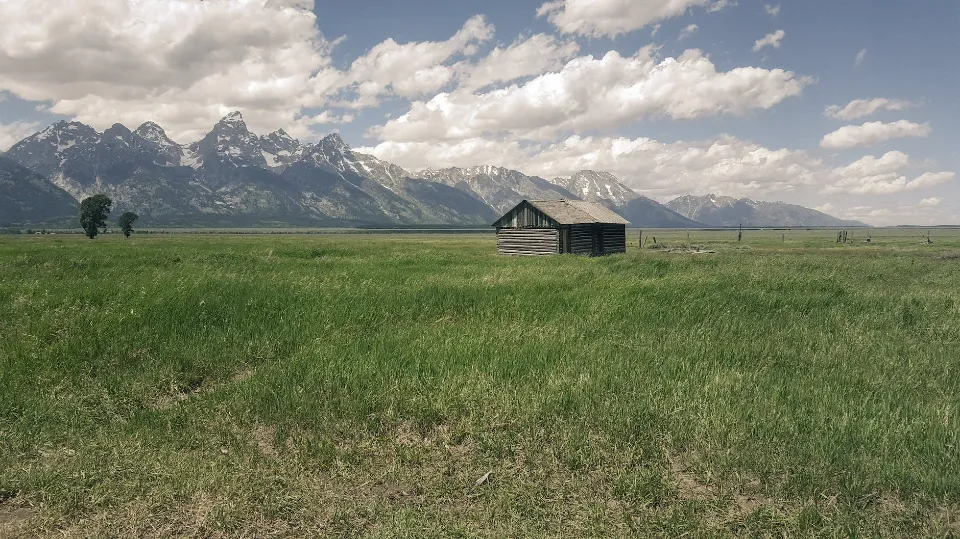
Choose the Right Seed for Your Climate
Choosing the right seed for your climate (cool-season grass or warm-season grass) will help ensure your seed is successful.
- Northern climates are where cool-season grasses are grown. The fastest-growing varieties include the following:
- Tall fescue germinates in 7–12 days, and turf typically takes 5–8 weeks to establish.
- Both perennial and annual ryegrass germinate in just 5–10 days, with an established turf in 5–8 weeks.
- Rough bluegrass takes 7 to 10 days to germinate, and turf typically takes 5 to 8 weeks to establish.
- Southern U.S. regions cultivate warm-season grasses. The fastest-growing varieties include the following:
- In between 6 and 12 weeks, buffalograss takes between 14 and 30 days to germinate.
- Bermuda grass germinates between 5–30 days. It takes 6–12 weeks to establish a new lawn.
- Centipede grass seeds germinate in two to three weeks, and turf takes six to nine weeks to establish. You may want to know How Long Does Grass Seed Last?
Plant at the Correct Time of Year
You’ll want to plant your grass seed according to the time period of active growth for that seed. Your lawn will establish more quickly if you do this.
- In soil that is between 50 and 65 degrees Fahrenheit, cool-season grasses sprout the fastest. It is typically late summer or early fall, with daytime highs of 60 to 70 degrees Fahrenheit.
- Warm-season grasses germinate more quickly in soil that is between 70 and 90 degrees Fahrenheit, which is typically between the end of spring and the beginning of summer when daytime temperatures are between 80 and 95 degrees.
- In a transitional climate, seed warm-season grass in the early spring and overseed with a cool-season variety as soon as the weather starts to cool.

Prep the Soil
We know it’s exciting to get out there and sow grass seed, but there are a few important things to do first:
- Start by clearing the area where you intend to plant of any current grass, weeds, and big rocks.
- Fill in low areas with soil, such as Scotts Turf Builder LawnSoil, and if your existing soil is really compacted, think about renting a tiller to loosen everything up.
- Give yourself a huge pat on the back after using a hard rake to level everything out in the end because soil preparation takes the most effort!
Seed and Feed
One of the most effective ways to get your grass to grow fast is to fertilize right after you plant. Use Scotts® Turf Builder® Starter® Food for New Grass on all grass types to encourage growth that is up to 70% thicker and 35% more rapid (vs. unfed). If you reside in the North, you might want to choose Scotts® Turf Builder® Triple Action Built for Seeding as an alternative because it will promote the development of strong, dense new grass while also keeping many common weeds, such as dandelion and crabgrass, at bay for up to six months.
You should use a spreader to easily and effectively apply both seed and feed. Use the Scotts® Whirl™ Hand-Powered Spreader for small lawns to evenly and smoothly cover up to 1,500 square feet. Which Spreader Is Best for Your Yard? may be of interest if you have a larger area.
Always carefully read the instructions on the package before using any product. There is no need to hazard a guess or judge by appearances, and more definitely does not equal better! To grow grass quickly and achieve the best results, follow the directions on the package’s instructions for how much product to use, how to spread it, and when to spread it.
Water and Protect the Grass
Keeping your seeded area moist is crucial, but you should water it more sparingly as the grass grows. Use a “mist – lightly water – deeply water” process like this:
- After seeding and fertilizing, you should maintain moisture in the top inch of soil until the seeds begin to sprout. This entails misting the area once per day, or twice if it’s particularly hot outside, but avoid letting it become soggy.
- After seeds begin to germinate, you’ll need to keep the top 2 inches of soil moist with light watering until the grass is about 3 inches tall.
- At this point, your grass is developing its root structure, so you want to begin watering deeply so that moisture reaches down through the top 6 to 8 inches of soil.
Keep foot traffic and pet interaction to an absolute minimum while watering and the grass is growing (avoid boisterous games of fetch and tag, for example). Plan to keep people and animals off the grass for at least a month, during which time your other outdoor spaces or nearby parks will become your closest allies.
Can you mow wet grass? Short answer: No. Whether it’s early morning and the lawn is still dewy, a rainstorm just ended, or you just ran your sprinklers, you should skip the mow for now. Please read on for more detailed information.
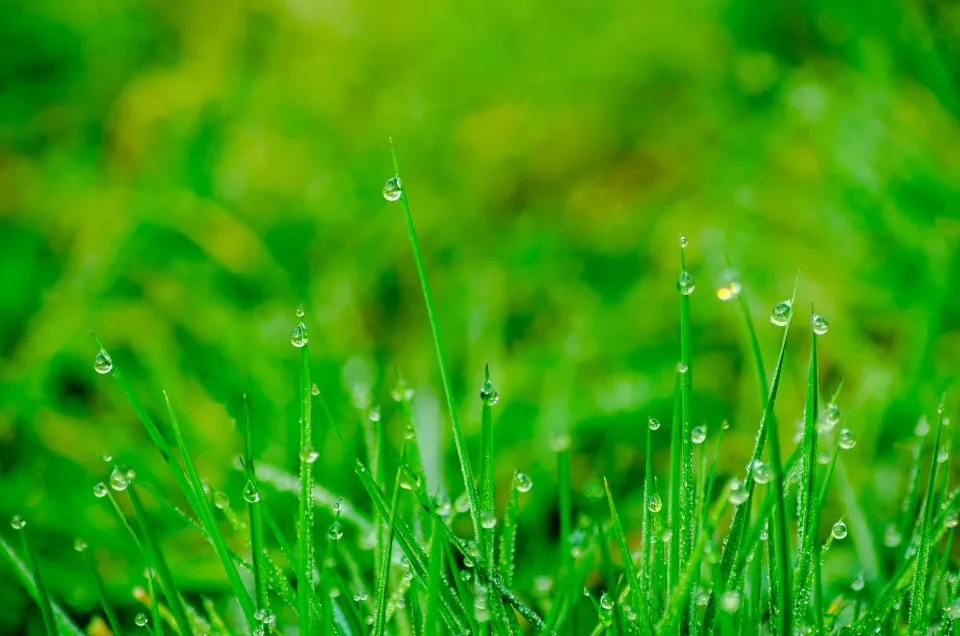
Roll Out the Turf
Installing sod rather than seed is one of the quickest ways to achieve a well-established, lush lawn. Although it takes work, this almost instant grass is satisfying.
- The soil needs to be level, with plenty of good drainage, and prepared as described above.
- To help the roots swell into the soil below, new sod should be watered at least twice daily.
Laying Sod
Without a doubt, sod is the quickest way to a well-established lawn. Because it has already expanded, for starters. Installing sod is like laying a lawn that takes care of itself. However, it is costly and requires some effort. You have to install sod as soon as you get it, because it begins to spoil quickly on the pallet. While laying it down piece by piece, making sure it is smooth and without gaps, it must be kept moist.
We advise hiring a qualified landscaper to lay the sod.

When Does Grass Grow the Fastest?
Almost any time of year, with the exception of winter, dormant seasons, and the hottest part of the year, is suitable for planting grass seed for small patch jobs.
First, determine whether you have cool-season or warm-season grass if you want to plant grass seed at the best time of year. The top half of the country is dominated by cool-season grasses, while the bottom half is dominated by warm-season grasses.
Perennial ryegrass, Kentucky bluegrass, and various fescue species are typical cool-season plants. St. Theresa’s grass is a warm-season grass. Bahiagrass, Augustine, centipede, and Zoysia. (Depending on where you live, some of these names may not all be quickly rising, but they are all likely well-known.)
Late summer to early fall are the best times to plant cool-season grasses. Late spring to early summer is the ideal planting period for warm-season grasses.
The best chance of successfully growing healthy, green grass is to plant grass prior to when it is at its most active.

FAQs
How Long Will It Take before My Lawn Fully Matures?
Experts say that a seeded lawn takes a complete year to become established. In a seeded lawn, you may have full growth in as little as a few months, but you’ll need to let the Earth complete a full revolution around the sun before your lawn is well established. When installing sod, keep in mind that it takes much less time to become established.
How Do You Make Grass Grow Faster in Minecraft?
The easiest way to grow grass on those sad dirt blocks is to raise the light level of the area. In areas with high light levels, grass will grow on top of dirt blocks. The formation of grass will be easier as the light level rises.
What Causes Grass to Grow Fast?
The four major factors that determine turf grass growth are sunlight, moisture, carbon dioxide and soil temperature. The quantity of nutrients present in your soil are some additional growth influencers.
What Fertilizer Makes Grass Grow Faster?
Nitrogen (N) promotes rapid growth and lush, green color. Healthy root systems are facilitated by phosphorus (P). Because of this, fertilizers for new lawns have a higher phosphorus content than those for established lawns.
Is Sugar Good for the Grass?
Sugar encourages grass roots to seek nitrogen in soil. This competitive use encourages grass to grow and smothers pest plants by reducing soil nitrogen for weeds. Use molasses spray or lightly sprinkled granulated or powdered sugar on your lawn.
Summary: How to Grow Grass Fast?
The best way to grow grass quickly is to plant the best grass seed for your climate and take the necessary precautions. Using sod, which is already-grown grass, is an even quicker but more expensive alternative.
If you have any questions, please leave a comment. My Prime Home tries to give you the best home improvement information. Don’t forget to share the post. Thank you for reading.
Read about
